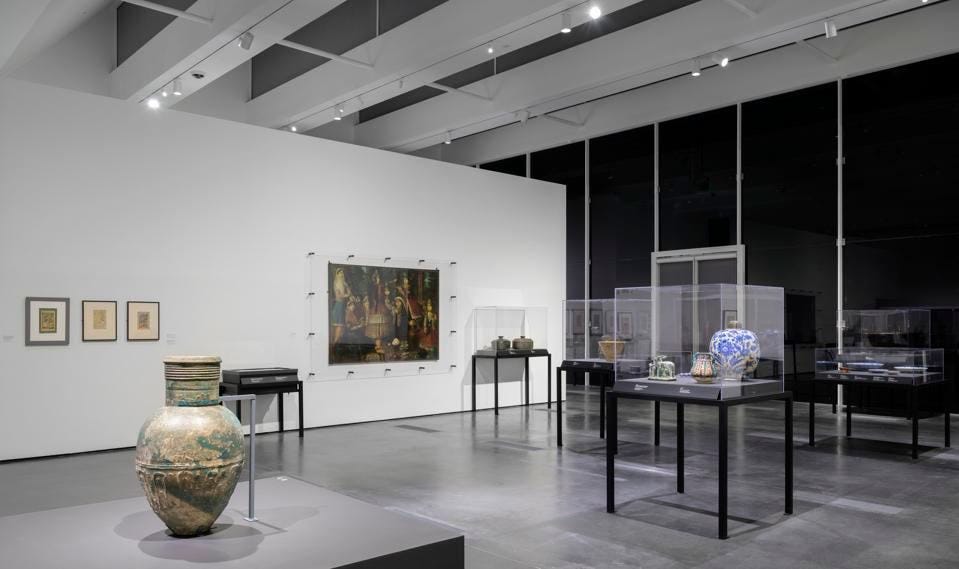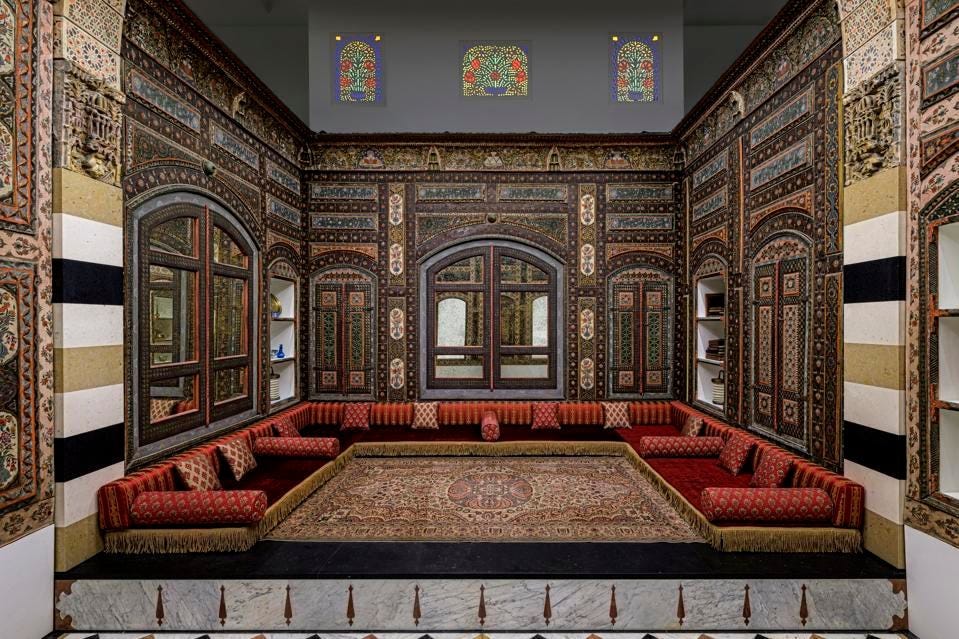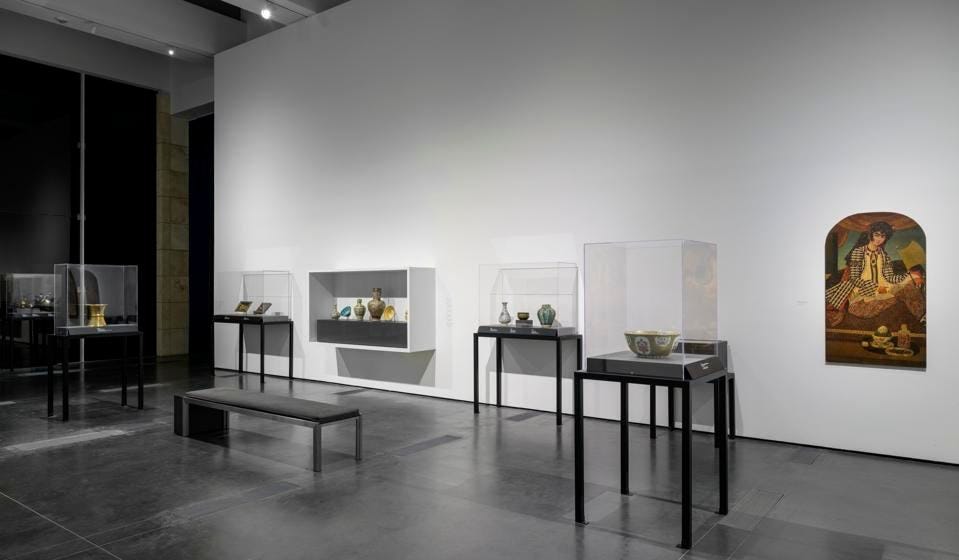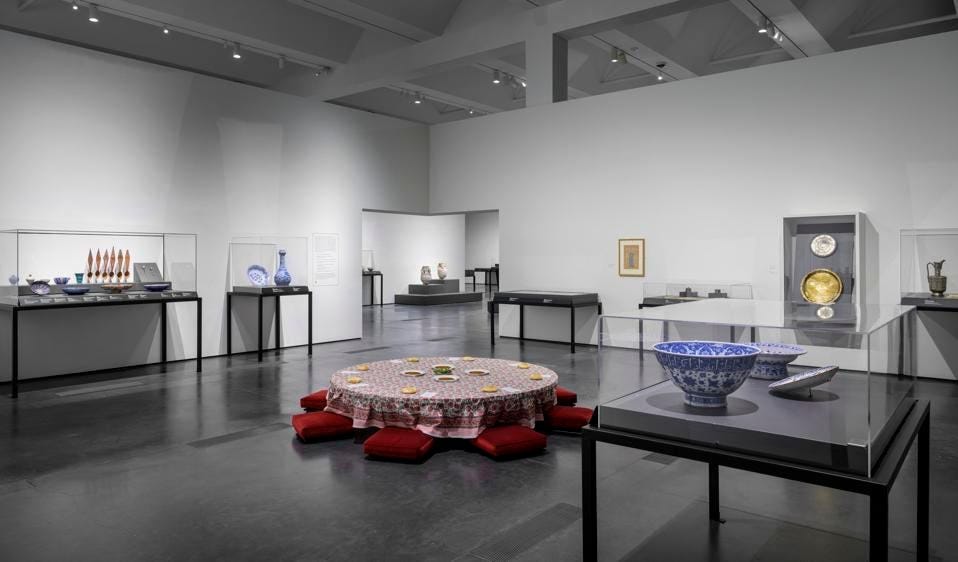“For many, if not most of us, our earliest encounter with another culture is not its art, literature, or history but its cuisine,” said Linda Komaroff, Curator and Department Head, Art of the Middle East, at the Los Angeles County Museum (LACMA).
Having recently experienced the traditional hospitality of Georgians in the Caucusus, I was intrigued to see LACMA’s new exhibition of Islamic Art viewed through the prism of its culinary and hospitality traditions.

I was all the more drawn because – and excuse me if I am stating the obvious— this is a time when we need to affirm and be reminded of the beauty of Islamic culture – as our news is filled with murderous Islamic terrorist extremism (not just in Israel but in Iraq, Iran, Sudan, Nigeria, Mali, Cote D’Ivoire, and Burkina Faso among others). Again, stating the obvious that needs saying: Islamophobia is a prejudice as insidious and can be as casual or virulent and violent as any other form of hate. Experiencing the Art and Beautiful objects of a culture are more important than ever.
In 2011, Komaroff-organized Gifts of the Sultan: The Arts of Giving at the Islamic Courts, a very popular LACMA exhibition that toured internationally to enormous success. Dining with the Sultan is a worthy successor, as it provides a very relatable way to experience Islamic culture and art.
Dining with the Sultan not only displays recipes, cooking tools, serving implements, and crockery, it aims to give us a contextualized experience of Islamic hospitality.

On display is The Damascus Room, an 18th Century reception room from Damascus which LACMA acquired in 2014, spent a decade restoring and conserving and which they are exhibiting for the first time. This is an actual room, which one can enter with an ornate colorful arch, with painted and carved wood walls, a stone wall fountain, and low couches to rest on.
Gourmet culture, as I learned from the exhibition, can be traced back to ninth century Baghdad; and by the 10th century, preparing, serving, and delighting in food was the subject of a growing literature. Dining with the Sultan features some 250 works from 30 public and private collections across the U.S., Europe, and the Middle East, as well as some 60 objects from LACMA’s collection of Islamic arts, including a gorgeous 16th Century tankard from Turkey, a 16th Century plate from Iran in a striking blue, an Iraqi bowl from the 9-10th Century and even an ornate 18th Iranian dress coat to wear to a feast.

The LACMA exhibition features several stunning portraits refuting the popular misconception that Islamic Art prohibits human representation, including Women around a Samovar from 19th Century Iran, and The Taster, from the 17th Century Turkish folio, The Habits of the Grand Signor’s Court and a striking 18th Century painting of a Turkish woman enjoying her coffee.

In addition, there are two special installations as part of the exhibition. One is a Sufra, which means the fabric covering a dining table, which also refers to a feast (interestingly the word for a feast in Georgia is Supra). A low to the ground circular table with many place settings has been created, at which four serving bowls in the center are screens that offer up a virtual six course feast all, according to the exhibition press release, “drawn from historical cookbooks but updated for contemporary gourmands.” The installation sits in a room surrounded by several beautiful dining objects, Including handwashing vessels and napkins.
There is also an installation by Sadik Kwaish Alfraji, A Thread of Light Between my Mother’s Fingers and Heaven, in which he recalls and recreates for us to the taste, smell, and feel of the bread his mother would make for a sufra, in which looking back is nostalgic and bittersweet.
The exhibition installation is elegant, as if one were browsing not in a museum but in an exclusive high-end boutique filled with treasures – which, one is.
To see such pleasing and artistically made objects many hundreds of years old, reminds us that in offering hospitality to another, in sharing a meal a choice, in making and using beautiful objects to serve, and to eat with, we are reminded of the human capacity for beauty.
It is a reminder worth seeing.

